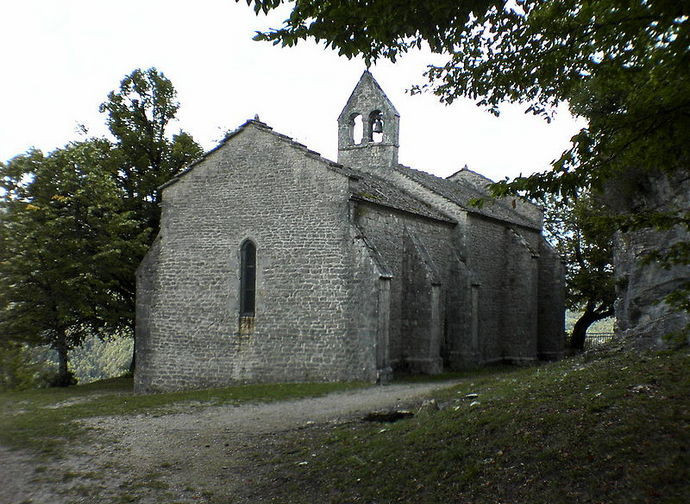Saint Romanus of Condat
Saint Romanus of Condat (c. 390-463) was born at the end of the 4th century, when monasticism, already widespread in the East, had also taken hold in the West. His parents sent him to study at the monastery of Ainay, in Lyon, where he was a pupil of Abbot Sabinus, who gave him a Life of the Desert Fathers.

Saint Romanus of Condat (c. 390-463) was born at the end of the 4th century, when monasticism, already widespread in the East, had also taken hold in the West. His parents sent him to study at the monastery of Ainay, in Lyon, where he was a pupil of Abbot Sabinus, who gave him a Life of the Desert Fathers. Wanting to imitate the ancient hermits, at 35 years old he retired to live under a large fir tree in Condat (today's Saint-Claude), on the Jura Massif. There he had found everything he wanted: arable land, a spring and, above all, the silence necessary for the contemplation of God. Some years later, his brother Saint Lupicinus joined him, sharing his life of fasting, penance and prayers. At a time of discouragement, suffering from the cold, the two left their shelter and, after a day's walk, begged hospitality from a woman, who encouraged them to go back, saying it was Satan who wanted them to give up. The two brothers followed her advice.
Attracted by their reputation for holiness, several young men soon joined Romanus and Lupicinus, who founded their first monastery in Condat; but this soon proved too small to accommodate all the aspiring monks. They built another monastery in Lauconne (today's Saint-Lupicin), leading together their confréres to the service of God by making a virtuous agreement for their different characters: Romanus was more forgiving and mild, while Lupicinus was more demanding in the observance of monastic discipline. If laxism spread in a monastery, Lupicinus intervened; if instead there was too much rigour, Romanus would intervene. The two Saints were then joined by their sister Yole, and for her they built a women's house on an overhanging rock, in an area later called Saint-Romain-de-Roche, which would later host over one hundred nuns.
Around the year 450, on the eastern side of the Jura Mountains, Romanus founded the first monastery in Switzerland, later called Romainmôtier, whose monastic function ceased in 1537, when the Protestant Reformation brought about its secularisation and the destruction of the cloister. Saint Romanus' most famous miracle occurred during a pilgrimage to the tomb of Saint Maurice. One night, near Geneva, the Saint took shelter with two lepers who lived in a hut, where he comforted and embraced them. Upon awakening, the two realised that they had completely healed and went to the city to tell the incident to the Genevans.




